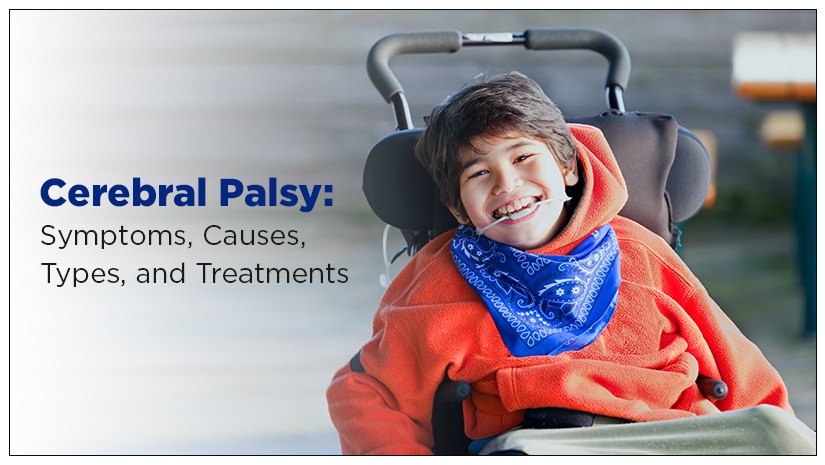Cerebral palsy Unveiled: Causes, Symptoms, and Treatments
 |
| Cerebral palsy Causes, Symptoms, and Effective Treatments,Health news // 24 Mantra |
Understanding the Risk Factors, Symptoms, and Treatment Options for cerebral palsy
R E A D : Conquering Vaginal Bacterial Infections Causes, Complications, and Prevention Tips
WHAT IS cerebral palsy
>> Cerebral palsy (CP) is a group of neurological disorders that affect a person's movement, muscle tone, and posture. It is caused by damage to the developing brain, typically before or during birth, but can also occur in the first few years of life. CP affects each person differently and can range from mild to severe. Some people with CP may have difficulty with fine motor skills, such as writing or using utensils, while others may have difficulty walking or may be entirely dependent on others for daily care. The symptoms of cerebral palsy are lifelong and may require ongoing medical treatment and therapy.
ACCORDING to RESEARCH cerebral palsy
According to research, cerebral palsy is a relatively common disorder, affecting approximately 1 in 500 live births. It is the most common motor disability in children. The exact cause of cerebral palsy is not fully understood, but it is thought to be the result of a combination of genetic and environmental factors.
Research has also shown that early intervention and treatment can significantly improve outcomes for individuals with cerebral palsy. This can include physical therapy, occupational therapy, speech therapy, and medication to manage symptoms. Additionally, ongoing research is being conducted to better understand the causes of cerebral palsy and develop new treatments.
Some research has also identified certain risk factors for cerebral palsy, such as premature birth, low birth weight, infections during pregnancy, and certain genetic conditions. Understanding these risk factors can help healthcare providers identify children who may be at a higher risk of developing cerebral palsy and provide appropriate care and support.
* Causes cerebral palsy
Cerebral palsy is caused by damage to the developing brain, typically before or during birth, but can also occur in the first few years of life. The exact cause of cerebral palsy is not fully understood, but there are several risk factors that have been identified:
> Prenatal factors: Infections during pregnancy, maternal health conditions, exposure to toxins, and genetic factors can all increase the risk of cerebral palsy.
> Perinatal factors: Problems during labor and delivery, including premature birth, low birth weight, and lack of oxygen to the brain, can increase the risk of cerebral palsy.
> Postnatal factors: Brain damage that occurs after birth, such as from infections or head injuries, can also lead to cerebral palsy.
It's important to note that not all cases of cerebral palsy can be attributed to a specific cause, and in some cases, the cause may be unknown. Additionally, not all infants who experience risk factors for cerebral palsy will develop the condition. The exact cause of cerebral palsy can be difficult to determine, and may require a team of specialists, including pediatricians, neurologists, and genetic counselors, to evaluate and diagnose.
R E A D : Melanoma Unpacked Symptoms, Causes, and Treatment Options Explained
* The symptoms of cerebral palsy
The symptoms of cerebral palsy can vary depending on the individual and the severity of the condition. Some common symptoms of cerebral palsy include:
 |
| Cerebral palsy Causes, Symptoms, and Effective Treatments, Health news // Health Jade |
> Difficulty with movement: This can include muscle stiffness, weakness, or involuntary movements.
> Abnormal posture: Individuals with cerebral palsy may have difficulty maintaining a stable, upright posture, and may have an abnormal gait or stance.
> Delayed developmental milestones: Children with cerebral palsy may experience delays in reaching developmental milestones, such as sitting up, crawling, or walking.
> Difficulty with fine motor skills: Individuals with cerebral palsy may have difficulty with tasks that require fine motor skills, such as writing or using utensils.
> Communication difficulties: Some individuals with cerebral palsy may have difficulty with speech, while others may have difficulty with nonverbal communication, such as gestures or facial expressions.
> Seizures: Some individuals with cerebral palsy may experience seizures, which can range from mild to severe.
It's important to note that the symptoms of cerebral palsy can vary widely and may change over time. Treatment, such as physical therapy, occupational therapy, and medication, can help manage symptoms and improve quality of life for individuals with cerebral palsy.
* Treatment and care of cerebral palsy
Treatment and care for cerebral palsy typically involve a team of healthcare professionals, including pediatricians, neurologists, physical therapists, occupational therapists, speech therapists, and other specialists as needed. The goal of treatment is to help manage symptoms, improve mobility and function, and enhance quality of life. Here are some common methods of treatment and care for cerebral palsy:
> Physical therapy: This involves exercises and activities that help improve muscle strength, coordination, and mobility. Physical therapy may also include the use of braces, splints, or other assistive devices to help with movement.
> Occupational therapy: This focuses on helping individuals with cerebral palsy develop skills needed for daily living, such as dressing, grooming, and feeding. Occupational therapy may also involve the use of adaptive equipment to help with activities of daily living.
> Speech therapy: This focuses on improving communication skills, including speech, language, and nonverbal communication.
> Medications: Medications may be used to help manage symptoms of cerebral palsy, such as muscle stiffness or seizures.
> Surgery: In some cases, surgery may be recommended to help improve mobility or correct skeletal deformities.
> Assistive devices: These can include wheelchairs, walkers, and other devices to help with mobility and function.
> Behavioral therapy: This can help individuals with cerebral palsy manage emotional or behavioral difficulties, such as anxiety or depression.
Treatment and care for cerebral palsy are individualized and tailored to meet the specific needs of each individual. Ongoing monitoring and management are important to help ensure optimal outcomes and quality of life.
>> Cerebral palsy is a neurological disorder that affects movement, muscle tone, and posture. The exact cause of cerebral palsy is not fully understood, but it is thought to be the result of a combination of genetic and environmental factors. The symptoms of cerebral palsy can vary widely, but may include difficulty with movement, abnormal posture, and delayed developmental milestones. Treatment and care for cerebral palsy typically involve a team of healthcare professionals, and may include physical therapy, occupational therapy, speech therapy, medication, surgery, assistive devices, and behavioral therapy. With early intervention and ongoing management, individuals with cerebral palsy can improve their mobility, function, and quality of life.
I R E A D :
- Drama, Charm, and Attention The Enigmatic World of Histrionic Personality Disorder
- The Deadly Stages of Marburg Virus Infection: Understanding the Risks and Symptoms
- The Impact of Social Media on Mental Health
- The Nevoid basal cell carcinoma syndrome (NBCCS) Causes, Symptoms, Treatment, and Management











